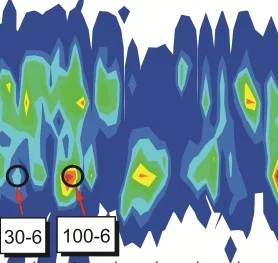We investigate 'hot' regions with anomalous high field dissipation in bulk niobium superconducting radio frequency cavities for particle accelerators by using low energy muon spin rotation (LE-μSR) on corresponding cavity cutouts. We demonstrate that superconducting properties at the hot region are well described by the non-local Pippard/BCS model for niobium in the clean limit with a London penetration depth λL=23+/-2 nm . In contrast, a cutout sample from the 120C baked cavity shows a much larger λ>100nm and a depth dependent mean free path, likely due to gradient in vacancy concentration. We suggest that these vacancies can efficiently trap hydrogen and hence prevent the formation of hydrides responsible for rf losses in hot regions.
Facility: SμS
Reference: A. Romanenko et al, Applied Physics Letters 104, 072601 (2014)
Read full article: here
Reference: A. Romanenko et al, Applied Physics Letters 104, 072601 (2014)
Read full article: here


